In the world of architecture, perhaps nothing is more utilitarian than a bridge. Indeed, not only do these spanning structures allow us to safely pass over a gap, but unlike some skyscrapers and homes, everyone has access to using a bridge. And just because they are functional does not mean they have to be ordinary in design.
From the Zaha Hadid–designed bridge in Abu Dhabi, to perhaps the lesser known Khaju Bridge in Isfahan, Iran, CAAN Design will present you some of the most inspiring bridges in the world.
Zaha Hadid – Breaking Danjiang Bridge in Taipei
Construction has begun on Zaha Hadid Architects’ Danjiang Bridge in Taiwan, the world’s longest single-mast, asymmetric cable-stayed bridge. At 920 meters in length, the bridge spans the mouth of the Tamsui River and is integral to the infrastructural upgrading program of northern Taiwan.
The bridge seeks to minimize its visual impact by using a single concrete mast to support its main 450-meter span with dedicated road, cycle, and pedestrian lanes. The scheme also accommodates future expansion of the Danhai Light Rail network across the Tamsui River.
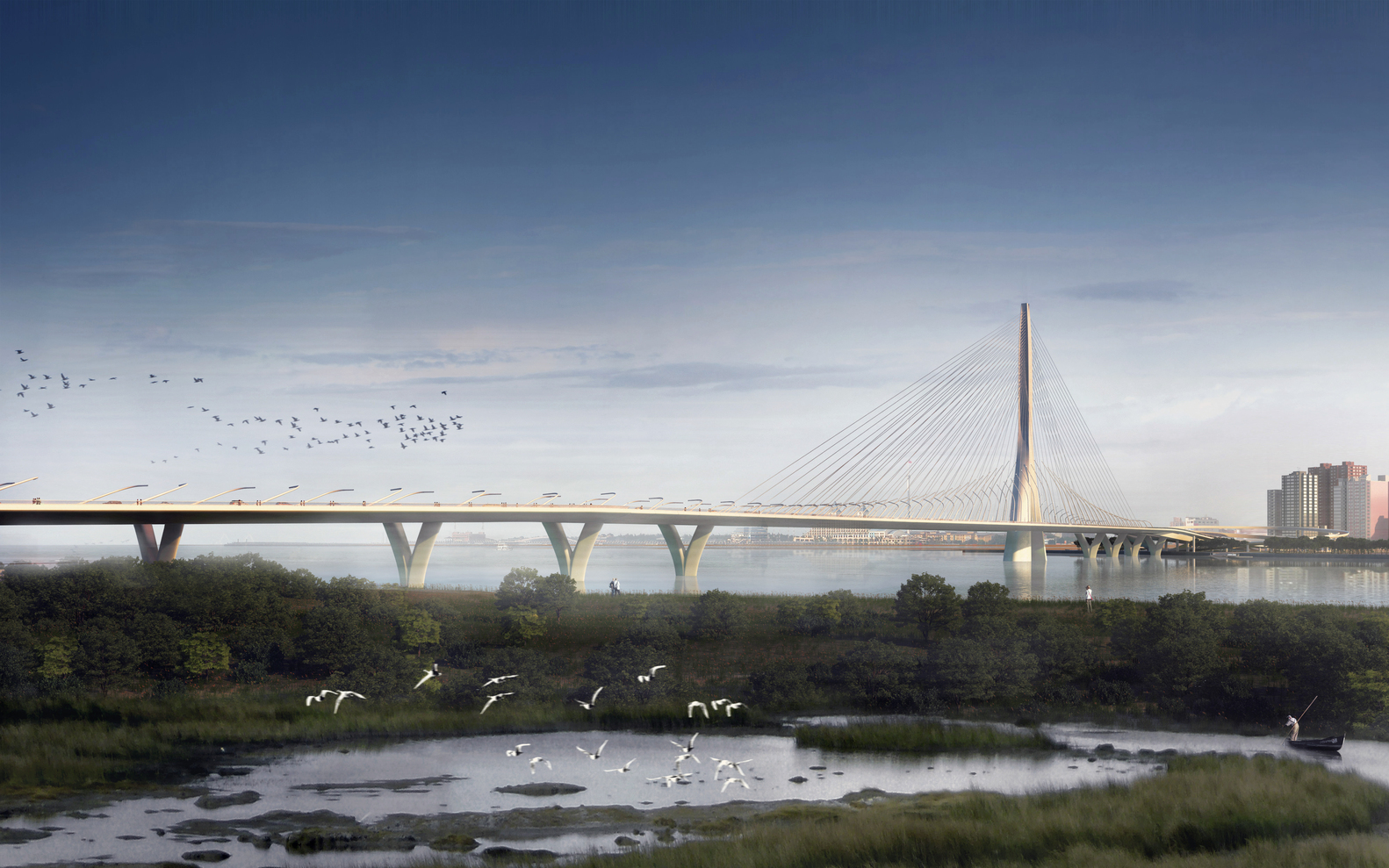
Khaju Bridge
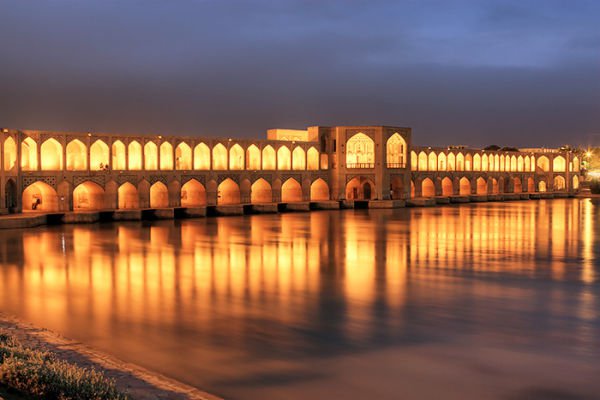
The Khaju Bridge is one of the historical bridges on the Zayanderud, the largest river of the Iranian Plateau, in Isfahan, Iran. Serving as both a bridge and a weir, it links the Khaju quarter on the north bank with the Zoroastrian quarter across the Zayanderud. It also served a primary function as a building and a place for public meetings. It has been described as the city’s finest bridge.
The mausoleum of Arthur Pope and his wife Phyllis Ackerman is situated nearby.
Constitution Bridge (Venice, Italy)
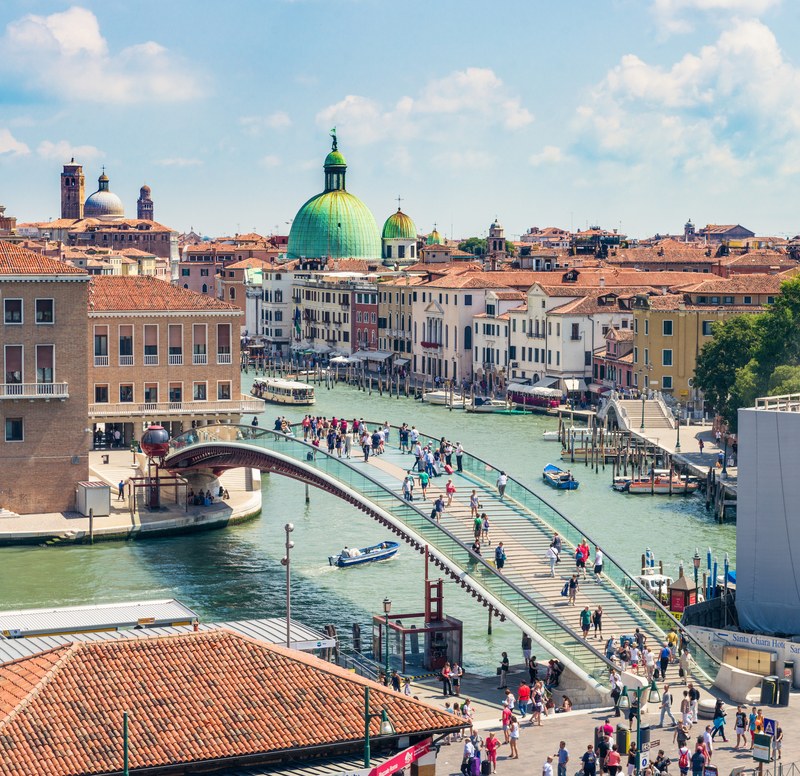
Completed in 2008, Venice’s Constitution Bridge is an iconic landmark that stands out within a city packed with incredible architecture. Designed by starchitect Santiago Calatrava, the structure is equally as beautiful to look at from above as it is from below (which is a concave, ribbed design).
Henderson Waves Bridge (Singapore)
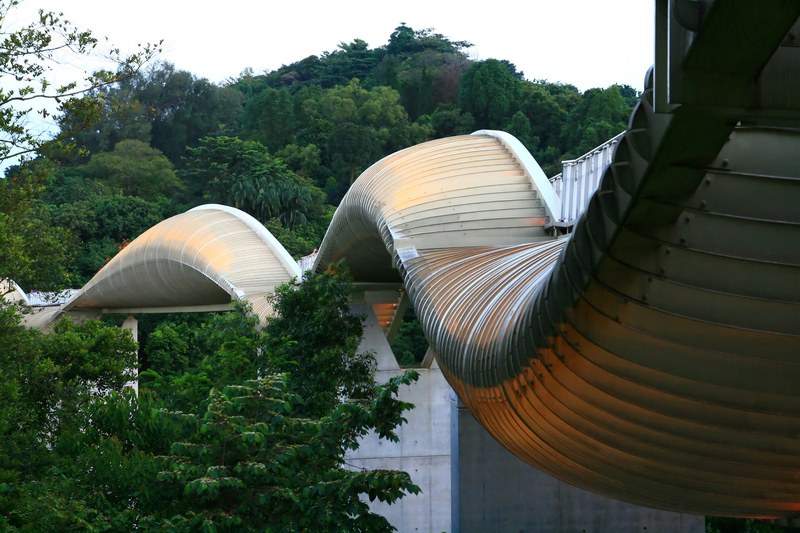
At 36 metres above ground, the Henderson Waves bridge is the highest pedestrian bridge in Singapore. Unveiled in 2008, its fantastical shape has lent an unexpected jolt of design savvy to the lush green belt in the south of Singapore.
True to its name, the bridge mimics the undulating shape of a wave, curving and twisting along its entire 274-metre length. Its form is anchored by steel arches and filled in with curved ‘ribs’—slats of Balau wood, a dense hardwood used in heavy construction which is found only in Southeast Asia.
The bridge’s shape allows it to have hidden recesses and shell-like niches, where pedestrians can sit and observe their surroundings. Because there’s privacy and room to rest, the bridge is a popular spot on weekends with couples, joggers and families with children.
As dusk falls, visitors linger to admire the bridge, which is illuminated to stunning effect by light-emitting diode (LED) lighting from 7pm to 7am every night.
Seri Wawasan Bridge
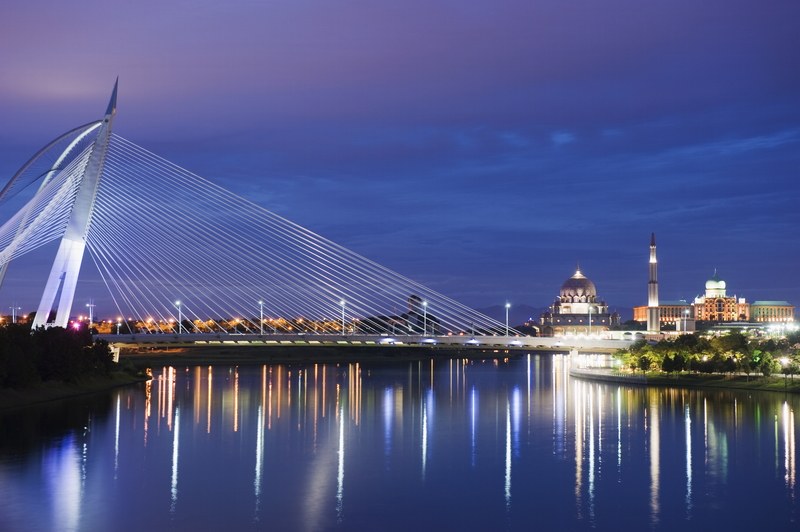
Completed in 2003, the Seri Wawasan Bridge was designed by the Kuala Lumpur-based firm, PJSI Consultants, and is located in Putrajaya, Malaysia.
The Seri Wawasan Bridge is a longitudinally asymmetric cable‐stayed box-girder bridge with an inverted-Y shape concrete/steel pylon 96 metres (315 ft) high. The main span, 165 metres (541 ft) long, is supported by 30 pairs of forward stay cables, anchored on the 75° forward‐inclined pylon and on the outer edges of the bridge deck, arranged in a fan shape pattern from the side elevation. To counterbalance these front stays, a combination of 21 pairs of cable backstays and structural steel tie back was used. The back stay anchored at the (next-) highest point of the pylon is anchored at the curved backstay anchorage point (next-) nearest to the pylon, creating a crisscross‐over pattern from the side elevation, which adds to the aesthetic of the bridge. The overall complexity of the back stay tie back structure, however, may be aesthetically distracting.[ The inclined concrete pylon and the backstays are anchored into bore piled foundation off the roadway in precinct 8.
The bridge carries a dual three lane carriageways of 18.6 m width each, comprising 3 x 3.5 m width lanes, 0.5 m hard shoulder, 0.5 m marginal strip. The median is 4 m wide and walkway cum cycle track width is 5.1 m giving a total width of 37.2 metres (122 ft) at the centre of the bridge.
Nescio Bridge (Amsterdam, Netherlands)
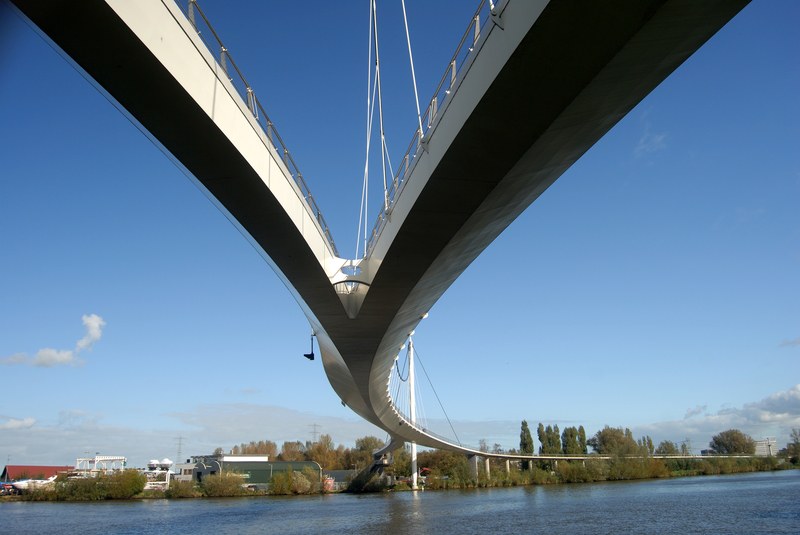
Completed in 2006, Amsterdam’s Nescio Bridge was so breathtaking in beauty and form that it won three major awards in a two-year span. Designed by the London-based WilkinsonEyre, the total length of the structure spans almost 2,600 feet, carrying pedestrians and cyclists over the Amsterdam–Rhine Canal.
Rialto Bridge (Venice, Italy)
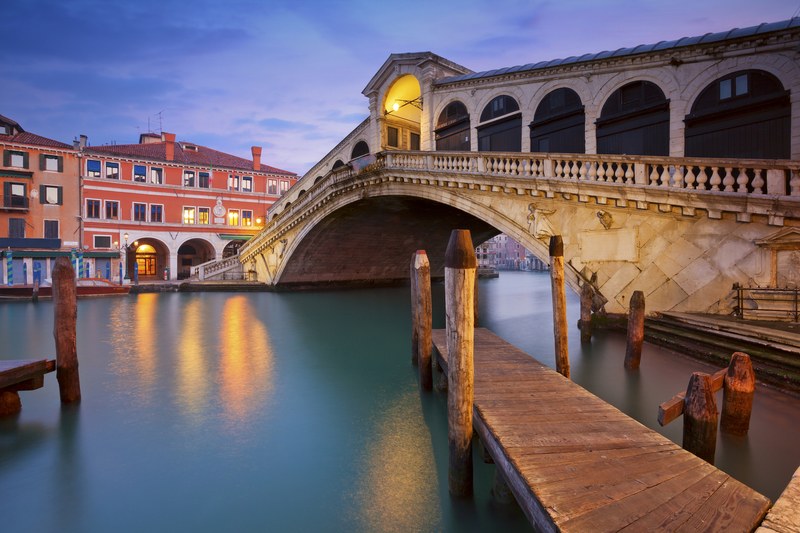
Venice’s Rialto Bridge, which was built in the 16th century, is the oldest bridge still standing over the city’s Grand Canal.
The first dry crossing of the Grand Canal was a pontoon bridge built in 1181 by Nicolò Barattieri. It was called the Ponte della Moneta, presumably because of the mint that stood near its eastern entrance.
The development and importance of the Rialto market on the eastern bank increased traffic on the floating bridge, so it was replaced in 1255 by a wooden bridge.[ This structure had two inclined ramps meeting at a movable central section, that could be raised to allow the passage of tall ships. The connection with the market eventually led to a change of name for the bridge. During the first half of the 15th century, two rows of shops were built along the sides of the bridge. The rents brought an income to the State Treasury, which helped maintain the bridge.
Maintenance was vital for the timber bridge. It was partly burnt in the revolt led by Bajamonte Tiepolo in 1310. In 1444, it collapsed under the weight of a crowd watching a boat parade and it collapsed again in 1524.
The idea of rebuilding the bridge in stone was first proposed in 1503. Several projects were considered over the following decades. In 1551, the authorities requested proposals for the renewal of the Rialto Bridge, among other things. Plans were offered by famous architects, such as Jacopo Sansovino, Palladio and Vignola, but all involved a Classical approach with several arches, which was judged inappropriate to the situation. Michelangelo also was considered as designer of the bridge.
The present stone bridge, a single span designed by Antonio da Ponte, was finally completed in 1591. It is similar to the wooden bridge it succeeded. Two inclined ramps lead up to a central portico. On either side of the portico, the covered ramps carry rows of shops. The engineering of the bridge was considered so audacious that architect Vincenzo Scamozzi predicted future ruin. The bridge has defied its critics to become one of the architectural icons of Venice.
Today, the Bridge is one of the top tourism attractions in Venice.[
Zubizuri (Bilbao, Spain)
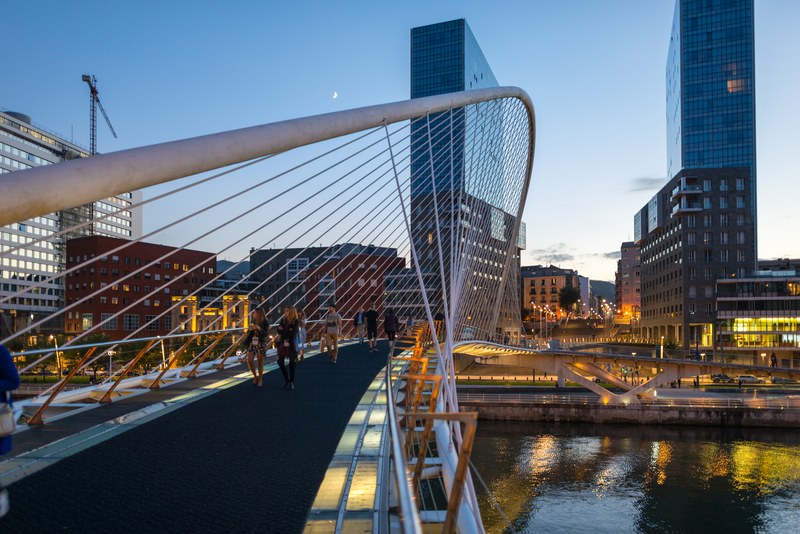
The Zubizuri footbridge (which also goes by the names Campo Volantin Bridge and Puente del Campo Volantin) was built in 1997. Designed by the legendary architect Santiago Calatrava, the structure is located in Bilbao, Spain.
The bridge’s unusual design consists of a curved walkway which is supported by steel suspension cables from an overhead arch. The structure of the bridge is painted white and the bridge deck consists of translucent glass bricks. Access ramps and stairways are located on both banks.
The Zubizuri offers pedestrians a convenient route from hotels to the nearby Bilbao Guggenheim Museum.
Manhattan Bridge (New York City, U.S.A.)
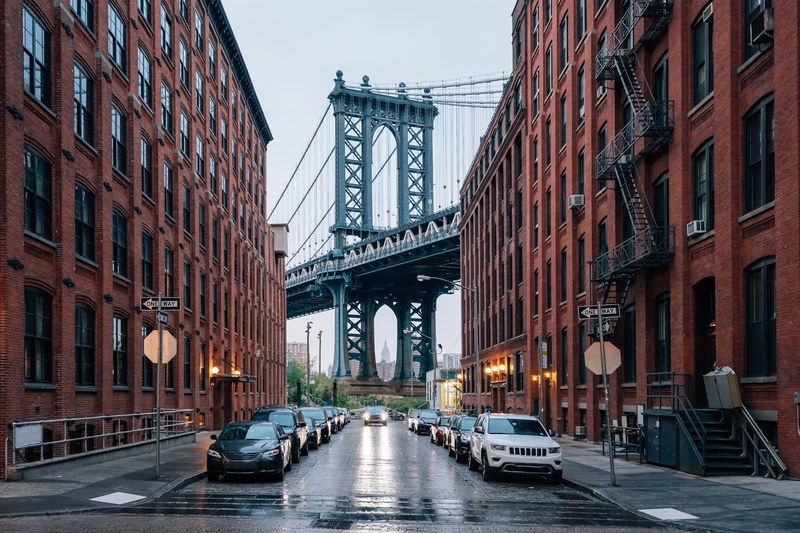
When the Manhattan Bridge was completed in 1912, it took the Brooklyn Bridge’s place for the longest bridge in the city. Spanning some 6,855 feet across the East River, the Manhattan Bridge was designed by Leon Moisseiff. Today, hundreds of thousands of commuters use the bridge, crossing by automobile, subway train, bicycle, or on foot.
Sheikh Zayed Bridge (Abu Dhabi, United Arab Emirates)
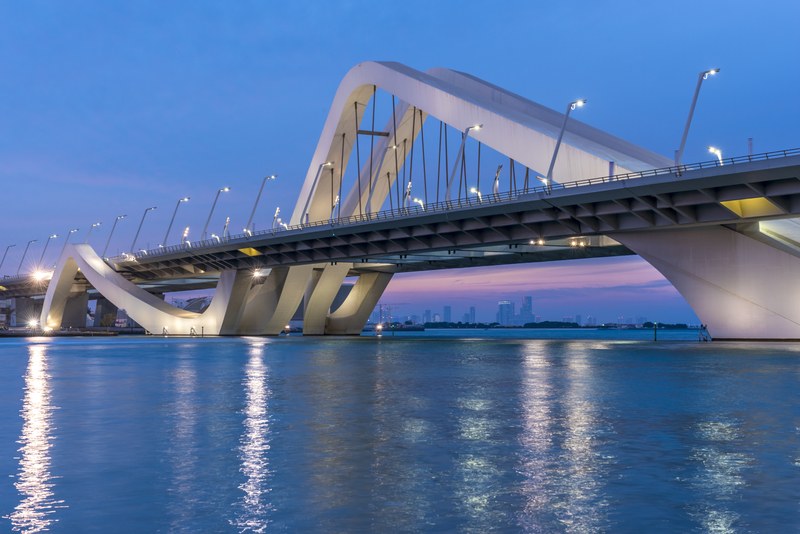
Designed by the late Zaha Hadid, Abu Dhabi’s Sheikh Zayed Bridge was completed in 2010 for a total of $300 million.
A collection, or strands of structures, gathered on one shore, are lifted and ‘propelled’ over the length of the channel. A sinusoidal waveform provides the structural silhouette shape across the channel.
The mainland is the launch pad for the bridge structure emerging from the ground and approach road. The Road decks are cantilevered on each side of the spine structure. Steel arches rise and spring from mass concrete piers asymmetrically, in length, between the road decks to mark the mainland and the navigation channels. The spine splits and splays from one shore along the central void position, diverging under the road decks to the outside of the roadways at the other end of the bridge.
The main bridge arch structure rises to a height of 60 m above water level with the road crowning to a height of 20 metres above mean water level.
Széchenyi Chain Bridge (Budapest, Hungary)
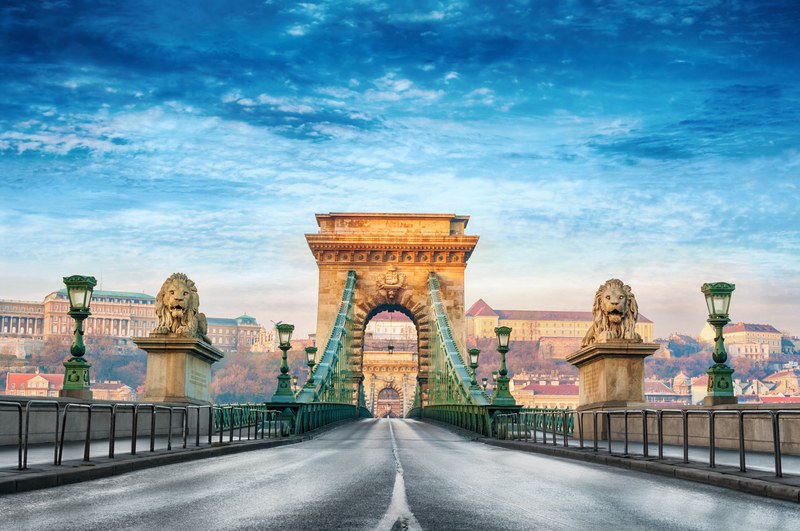
Designed by the British-born engineer William Tierney Clark, Budapest’s Széchenyi Chain Bridge opened in 1849 and crosses the mighty Danube river.
The bridge has the name of István Széchenyi, a major supporter of its construction, attached to it, but is most commonly known as the “Chain Bridge”. At the time of its construction, it was regarded as one of the modern world’s engineering wonders. It has asserted an enormous significance in the country’s economic, social and cultural life, much as the Brooklyn Bridge has in New York and the US.[ Its decorations made of cast iron, and its construction, radiating calm dignity and balance, have elevated the Chain Bridge to a high stature in Europe.
It became a symbol of advancement, national awakening, and the linkage between East and West.
Puente de la Mujer (Buenos Aires, Argentina)
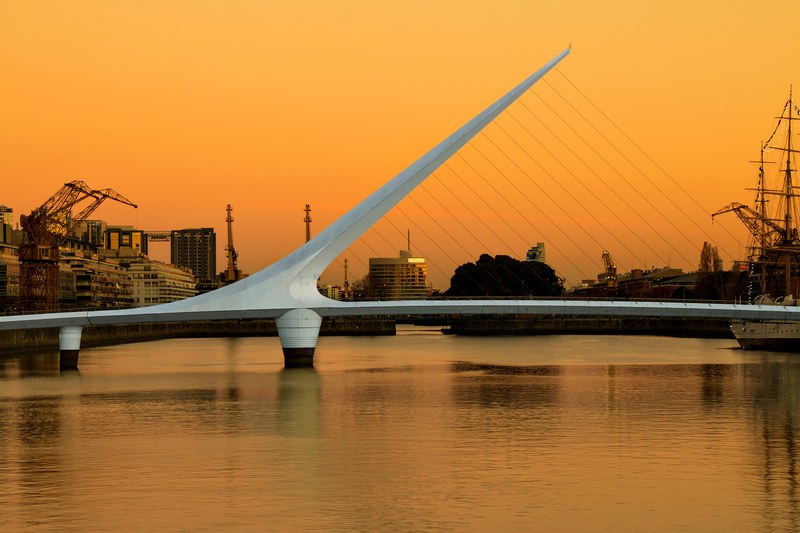
Designed by starchitect Santiago Calatrava, Puente de la Mujer, which was completed in 2001, is located in the commercial district of Buenos Aires.
The 170-metre pedestrian bridge weighs 800 tonnes, is 6.20 m wide and is divided into twofixed portions, 25 m and 32.50 m long respectively, and a middle section of 102.5 m that rotates on a white concrete pylon, allowing vessels to pass in less than two minutes. This central section is supported by a steel “needle” with a concrete core, about 34 m high. The “needle,” inclined at a 39° angle, anchors suspension cables which support the central span. A computer system at the eastern end of the bridge operates the turning mechanism when required.





